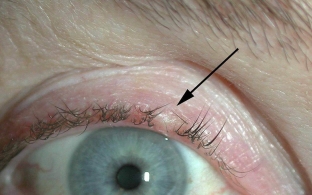Oncopathology is definitely one of the most dangerous problems of the 21st century. Currently, the incidence of malignant tumors is only increasing, making cancer one of the main causes of death. Malignant neoplasms can have completely different localization, even appearing on the face of a person, since this area is actually constantly open and subject to the influence of various environmental factors. A fairly large percentage of malignant tumors in the face is cancer of the eyelid. About what types of malignant tumors can develop on the skin of the eyelids, read on estet-portal.com.
The main clinical forms and methods of treatment of eyelid cancer
Cancer of the century – This is a very dangerous cancer that affects the skin of the eyelids. But in the structure of all oncopathology, the localization of a malignant formation on the face has some advantages. As you know, the prognosis for a patient's cure is determined, first of all, by how timely his diagnosis was established. And any neoplasms that appear on the face simply cannot but attract the attention of the patient and go unnoticed for a long time. Timely access to a doctor, effective diagnosis and a quick start of treatment can maximize the life of patients. Most often, eyelid cancer is represented by two types of neoplasms: basal cell and squamous cell cancer.
Cancer of the eyelid:
- basal cell carcinoma of the eyelid: features of the disease;
- characteristic features of squamous cell carcinoma of the eyelid;
- effective treatments for eyelid cancer.
Basal cell carcinoma of the eyelid: features of the disease
Basal cell carcinoma accounts for about 90% of all malignant neoplasms originating from epithelial tissue. This type of eyelid cancer is localized mainly on the lower eyelid and inner commissure of the eyelids. There are three forms of basal cell carcinoma of the eyelid:
- nodular form: tumor boundaries are clear, growth is slow, the presence of a crater-like depression in the center of the tumor node is characteristic;
- corrosive-ulcerative form is manifested by the formation of small ulcers in the thickness of the marginal edge of the eyelid, the area of which gradually increases. Ulcers are crusty and bleed easily;
- scleroderma-like form is initially represented by weeping erythema, which in the process of growth is replaced by a dense whitish scar, and spreads to the surrounding healthy tissues.

Characteristic features of squamous cell carcinoma of the eyelid
Squamous cell carcinoma accounts for about 18% of all cases of eyelid cancer. Older people are susceptible to this disease, as their skin is most sensitive to exposure to sunlight. Other factors predisposing to the development of squamous cell carcinoma of the eyelid include chronic eyelid skin diseases, eyelid skin defects that do not heal for a long time, xeroderma pigmentosum, and oculocutaneous albinism. Initially, squamous cell carcinoma of the eyelids is represented by skin erythema. Then, a seal appears in the erythema zone, perifocal dermatitis and conjunctivitis occur, and an ulcerative defect forms in the center of the tumor node. If the node is located at the edges of the eyelids – the tumor can spread directly into the orbit very quickly.
Effective treatments for eyelid cancer
Treatment of eyelid cancer can only be planned once the results of the histological examination of the neoplasm obtained from the biopsy have been obtained. If the size of the tumor does not exceed 10 mm. – surgically produced & nbsp; its removal. At present, the use of microsurgical techniques, radio wave or laser scalpels is highly effective. In some cases, cryodestruction or contact radiation therapy can be used. If eyelid cancer is localized near the intermarginal space – only photodynamic therapy or external irradiation of the tumor can be carried out. The germination of the neoplasm in the orbit or on the conjunctiva is an indication for subperiosteal exenteration of the orbit. With timely treatment, about 95% of patients can prolong life by more than 5 years.









Add a comment